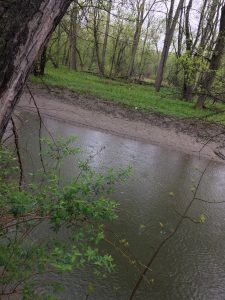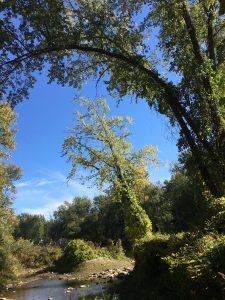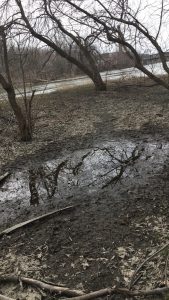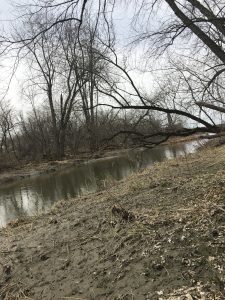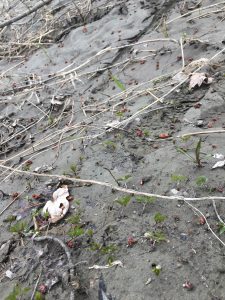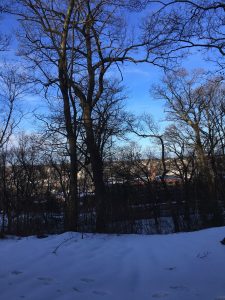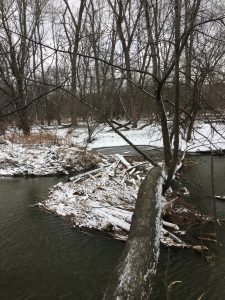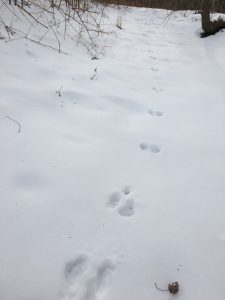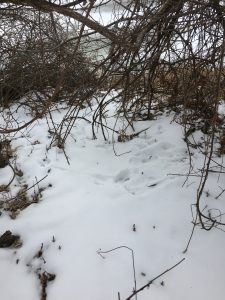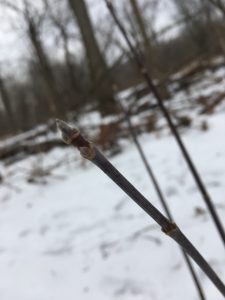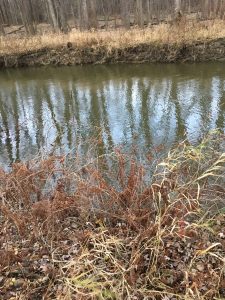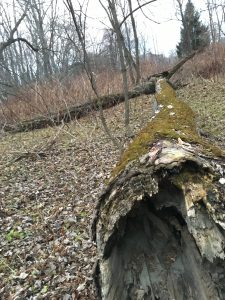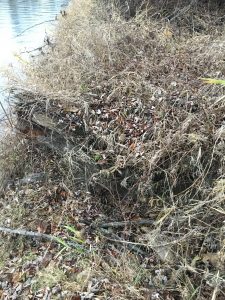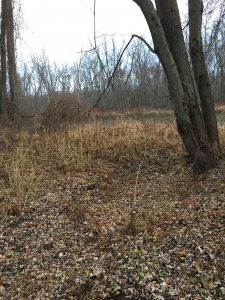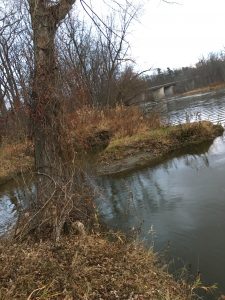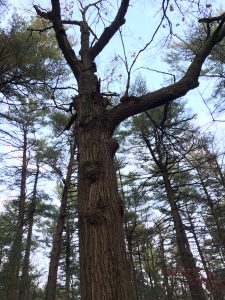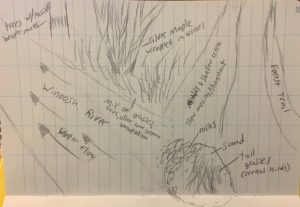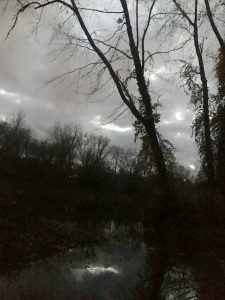As I entered the Casavant Natural Area for the last time this year, the signs of Spring were fully visible. My spot was vibrant with green silver maples and was sprouting with fiddle heads covered in rain water. The ubiquitous green color that filled the trees and ground reminded me of my first few visits to my phenology spot back in the fall semester. I am very pleased that I choose the area I did, since changes to the environment were quite dynamic. I think this is best illustrated by the fact that I could only get to my original location in the fall, when the river was dry, and in the winter, when the river was frozen solid.
Nature and culture have both played a role at my spot. The Casavant Natural Area is one of the few places in Winooski where the citizens can go and enjoy the natural world, making it a culturally significant area. Also, as we learned in class, since the spot is a silver maple-ostrich fern floodplain, it has very important natural features, such as keeping the structural integrity of the river and filtering pollutants. The fact that such a significant ecosystem is frequented by large waves of people every day makes my phenology spot an even more fascinating place.
I have grown to be very fond of my phenology spot, and all in all, I have started to consider myself apart of it. I say this because over the last several months I have learned and experienced much there. My phenology spot became an area I knew a plethora about, but it also became a spot for me to go to for break or breather from stress. It was through the treks where I traveled alone off of campus to Winooski and sat under a tree when I first began to feel this way. Spending time at my spot began to feel safe and comforting after a couple of months. This, I believe, was when I first felt like I was apart of my place.
During my last visit, I found it fascinating how much my spot looked like it did originally. Witnessing the changes from fall to winter, then winter the spring, has been a remarkable experience. Never before have I thought so much about how a specific spot changes in a year. I wish I could be able to stay for extra weeks to see my penology spot make it full circle. Throughout the next three years I hope to occasionally return to the Casavant Natural Area to see how my phenology spot is keeping up.


